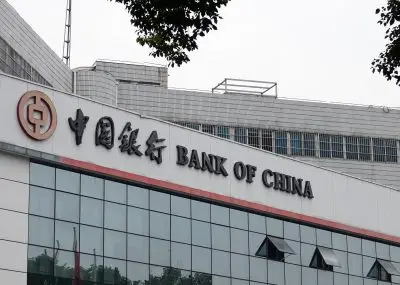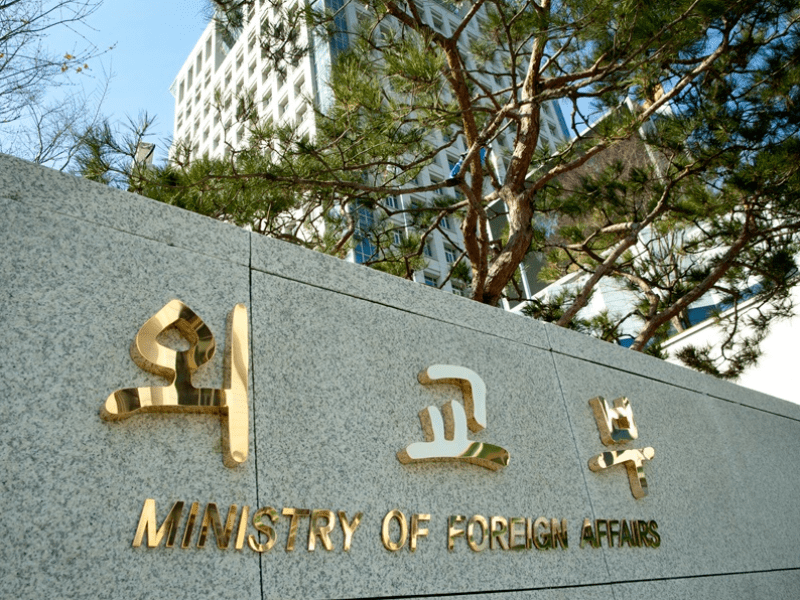[동아시아포럼] 시진핑 정부, 금융 개혁에 박차
중국, 집중통일영도 강화를 위한 금융 개혁 단행 이번 개혁으로 부문별 규제 벗어나 기능별 규제 완성될까 불확실한 경제전망, 중국은 보다 신중한 개혁 추진해야 할 것
[동아시아포럼]은 EAST ASIA FORUM에서 전하는 동아시아 정책 동향을 담았습니다. EAST ASIA FORUM은 오스트레일리아 국립대학교(Australia National University) 크로퍼드 공공정책대학(Crawford School of Public Policy) 산하의 공공정책과 관련된 정치, 경제, 비즈니스, 법률, 안보, 국제관계에 대한 연구·분석 플랫폼입니다.
지난 3월 16일 중국 공산당은 ‘제20기 중앙위원회 제2차 전체 회의’에서 ‘당과 국가 기구 개혁방안’을 발표했다. 이번 개혁 방안은 그동안 국무원이 주도했던 금융·과학기술 등 주요 국정 현안을 당 중앙위원회가 장악하고, 공산당이 경제사회 발전을 주도하는 것을 골자로 한다. 중국은 이를 통해 금융 규제 프레임워크를 개혁한다는 구상이다.

핵심은 금융감독체제의 공산당 집중화
개혁 방안에 따르면 공산당 산하의 당 중앙금융위원회를 신설, 기존의 국무원 산하 금융안정 발전위원회의 업무를 대체하게 된다. 중앙금융위원회는 금융 안정과 발전의 설계·조정·추진을 책임지고 금융 분야 주요 정책을 연구·심의할 예정이다. 이는 금융 업무에 대한 공산당 중심의 ‘집중통일영도(시진핑 주석의 권한 증대)’를 강화하는 목적을 반영한 개혁으로 해석된다.
증권업을 제외한 금융기관 전반을 감독하고 금융소비자 권익 보호를 총괄하는 국가금융감독관리총국(이하 총국) 역시 국무원 산하 직속 기관으로 신설된다. 총국이 설치되면 기존에 유사한 기능을 담당해 온 은행보험감독관리위원회는 폐지되고 인민은행(PBOC)은 통화 정책 및 거시건전성 규제에만 집중할 방침이다.
중국 금융감독체제의 발전
지금의 ‘총국-중앙금융위원회-인민은행’의 삼각 체제를 형성하기까지 중국의 금융감독 체제는 많은 시행착오를 겪었다. 1990년 이전에는 금융 산업 내에 중국건설은행, 중국은행, 중국농업은행, 중국공상은행 등의 국영 상업은행만 존재했으며 규제 감독기구는 인민은행이 유일했다.
이후 은행업관리위원회(CBRC)·증권감독관리위원회(CSRC)·보험감독관리위원회(CIRC)가 차례로 수립되고 분업 감독체제로 전환된 금융 시스템은 2001년 WTO 가입 전후로 중국 금융시장 활성화 및 은행업·증권업·보험업 등 여러 분야를 오가는 금융 상품이 대거 등장하면서 또 한 번 변화를 겪었다. 부문별 규제 감독이 불가능해졌고 금융 상품별 감독 책임 소재 역시 불분명해지면서 규제 공백과 더불어 중첩 규제의 문제가 발생한 것이다. 이러한 규제시스템의 붕괴는 금융 시장에 규제를 우회한 차익거래 유인을 제공하는 등 문제를 야기했고, 이후 중대한 경제 금융 리스크로까지 이어졌다.
2000년 9월 중국은 분업 감독 기구간 조화와 중복 감독 방지를 위해 인민은행·CSRC·CIRC 공동으로 ‘금융감독연합위원회’를 구성해 금융 겸업화를 가속화했다. 나아가 중국 정부는 2003년 금융 개혁을 선언하고 △중국인민은행 △은행업감독관리위원회 △증권감독관리위원회 △보험감독관리위원회 등 여러 감독 기구로 구성된 금융관리·감독 체제를 구축했다. 그러나 이들 기구 모두 집행 권한이 없어 중국 당국의 실질적인 개혁을 이루지는 못했다.
이후 시진핑 정부는 2010년대 초반의 중국 부동산 위기, 2015년 중국 증시 폭락 등 일련의 금융 위기로 침체된 경제를 부양하기 위해 2017부터 2018년까지 대대적인 금융 개혁을 단행했다. 중국 정부는 가장 먼저 2017년 국무원 산하 금융안정발전위원회를 신설하고, 다른 규제 기구의 상위 기구로서 주요 현안 해결 및 금융 개혁을 주도할 수 있는 집행 권한을 부여했다. 이어 2018년에는 은행업감독관리위원회와 보험감독관리위원회를 은행보험감독관리위원회(CBIRC)로 통합했다.
2년에 걸친 금융 개혁은 변화하는 금융 시장에 발맞춰 중국이 ‘부문별 규제’를 벗어나 ‘기능적 규제’로 점진적으로 전환하는 모습을 보여줬다는 평가를 받았다. 올해 추진하는 금융체제 개혁 역시 지난 금융 개혁의 연장선상이자 정부 부채 증가, 부동산 시장 붕괴 등 각종 금융 위기에 대한 금융시스템 통제 강화 방편으로 풀이된다.
인민은행 및 지방금융감독체제도 개혁
먼저 집행 기관으로 별도의 중앙금융공작위원회(이하 금융공작위)가 공산당 중앙 산하로 편제된다. 금융공작위는 1997년 동아시아 금융위기 이후인 1998년에 설립돼 2003년까지 중앙은행과 국영 금융기관·금융감독기관의 정책·인사를 총괄하는 역할을 했다. 약 20년 만의 금융공작위 부활은 시진핑 정권이 작금의 위기를 1997년 금융위기만큼이나 위태롭게 전망하고 있다는 의미로 해석된다.
인민은행 지사 기구에 대한 개혁도 이뤄진다. 구체적으로 상하이, 톈진, 선양 등 구역별로 두던 분행 및 분행 영업관리부, 성 소재지 도시 중심 지행은 폐지될 예정이다. 대신 31개의 성급 분행을 설립하고 △심수 △대련 △영파 △청도 △하문에 단독 계획 시 분행이 설립된다. 이와 같은 체제 개혁은 기존에 비해 통화정책 운용 및 거시건전성 감독을 용이하게 해줄 것으로 기대된다.
지방금융감독 관리체제도 개편된다. 중앙 금융 관리 부문은 지방 파견기구를 중심으로 금융 감독 및 정책 조정을 실시할 계획이며 이는 지방 정부 자체의 감독기구와의 협업하에 이뤄진다. 이어 지방정부 금융 개발은 공산당의 관할로 넘어가고 재무위험 관리만 지방정부의 최우선 과제로 선정될 예정이다.
지방금융 관리체제 개혁은 지방정부의 부채 누적에 따른 것으로 지난해 중국 지방정부의 부채는 35조 위안(약 6,161조4,000억원)이며, 지방정부의 자금 조달용 특수법인인 LGFV의 부채는 무려 60조 위안(약 1경562조원)에 달한다.
문제의 심각성을 인식한 중국 당국은 부채구조조정 및 통화 스와프를 통한 해결 의지를 표명했다. 이번 개혁 방안에 포함된 지방금융감독 관리체제의 당 집중화는 지방정부의 부채 구조조정과 통화스와프는 공산당이 관리 및 실행을 주도하고, 금융 위험 관리만 지방 정부에게 위임하는 방식이다.
불확실한 경제전망, 신중한 개혁 추진해야
대대적 금융 개혁이 이뤄지는 올해, 중국 경제는 대내외적으로 다양한 도전에 직면해 있다. 특히 인플레이션에서 벗어나기 위해 긴축 통화정책을 단행하고 있는 미국과 달리 중국은 오히려 디플레이션을 해결하기 위한 경기부양책을 펼치고 있어 세계 경기 회복의 양상이 한층 더 복잡해졌다. 서구 주요국들과 중국의 금리 격차는 달러화 유출 및 환율 상승으로 이어져 종국엔 경기부양책의 걸림돌로 작용할 수도 있는 만큼 우려의 목소리가 높아지고 있다.
경제 전망이 불확실한 만큼 중국은 그 어느때 보다 신중하게 금융 개혁을 실행해야 한다. 개혁 방안에서 핵심적인 역할을 담당하는 총국이 지난 5월 10일 정식으로 출범한 가운데 중국이 총국 중심으로 당과 국가 기구 개혁 방안을 충실히 이행해 나갈 수 있을지 이목이 쏠린다.
China’s new financial regulatory framework finds its feet
On 16 March 2023, Beijing released an official plan to reform Party and state institutions. This document lays out plans to address deficiencies in the ability of the Chinese government’s own institutions to lead the nation’s development. Part of the 2023 plan is to reform and restructure the financial regulatory framework.

According to the plan, a central commission for finance will be established as the Central Committee’s own decision-making institution — designing, coordinating and overseeing the country’s efforts to achieve financial stability and development. It will replace the existing State Council’s Financial Stability and Development Committee. This is Beijing’s way of enhancing its authority over a financial sector that has become a source of turbulence in recent years.
A new national regulatory body, the National Bureau of Financial Regulation, will also be set up. It will oversee consumer rights protection and regulation of the financial industry except for the securities industry. The China Banking and Insurance Regulatory Commission will be abolished and the PBOC will focus on monetary policy and macroprudential regulation.
China’s financial regulatory framework has gone a long way from a one-regulator structure to the current one bureau, one commission and one bank structure. Before 1990, China’s financial sector consisted of a few state-owned commercial banks and the PBOC was the only financial regulator.
China’s financial industry started to change in the early 2000s as cross-sectorial financial products, such as bank wealth management products, began to emerge. This has posed challenges to the sectoral regulatory framework as these blended financial operations require supervision from more than one regulator. It also creates room for circumvention of regulation in territories where supervisory responsibilities are unclear and rent seeking in areas where supervisory responsibilities are overlapping.
In an attempt to address supervisory inefficiency, the State Council approved an inter-ministerial joint meeting system for all financial regulators to coordinate cross-sectorial regulations in 2003. This failed to achieve its goal because none of the regulatory bodies had actual executive power to lead the way.
Beijing started a major reform in 2017–18 after seeing turbulence in the stock market, real estate market and internet financing in the past few years. First, the Financial Stability and Development Commission was created under the State Council in 2017. This commission is on a higher administrative ranking than the existing regulators, which ensures that it has the executive power to mobilise others to tackle major issues and to lead financial reform. Then the Banking Regulatory Commission and the Insurance Regulatory Commission was replaced by a China Banking and Insurance Regulatory Commission in 2018.
The 2017–18 reform shows a gradual transition from sectorial regulation to functional regulation as Beijing responds to the changing financial sector. The 2023 reform is a continuation of this transition, and yet shows Beijing’s pressing concern about financial risks and desire for a stronger grip over the financial system.
The Central Commission for Finance was created in 1998, after the outbreak of the Asian financial crisis, to centralise forces to stabilise the economy and coordinate risk management. Its resurrection today suggests that Beijing’s concern over the financial system has reached the same level as during the crisis.
The 2023 plan also seeks to optimise the central bank’s structure. All the regional branches, which operate across multiple provinces, will be removed. Instead, there will be one provincial-level branch in each of the 31 provinces and five separate branches in the cities of Shenzhen, Dalian, Ningbo, Qingdao and Xiamen. It will be a better central–local structure for monetary policy implementation and macroprudential regulation.
Local financial regulatory frameworks will be modified. Central financial regulators will send out local agencies to oversee, coordinate and implement financial supervision and reform, in collaboration with local governments’ own financial regulatory bodies. Local governments are no longer responsible for promoting financial development. Rather, they have been given the clear task of reining in financial risks. It is clear that Beijing wishes to control financial supervision at the local level as much as at the national level.
The reform of the local financial regulatory framework arises from a deep concern over the scale of local government debt. In 2022, the Chinese local government’s debt reached 35 trillion RMB (US$4.8 trillion) and the local government financial vehicle (LGFV) debt was close to 60 trillion RMB (US$8.3 trillion).
Beijing has recognised the risks embedded in this multi-trillion local government debt and aims to resolve implicit LGFV debt via large-scale debt restructuring and swapping. Reform on the local financial regulatory framework will ensure that Beijing will lead the debt restructuring at the local level while making the local governments accountable for controlling financial risks.
The 2023 round of financial reform comes at an extraordinary time for the Chinese economy. The external environment is uncertain again, due to the pressure of high inflation and tightening monetary policy in advanced economies. Domestically, slow growth, accumulating systemic risk and the shrinking policy room are the biggest challenges.
Given the uncertain economic outlook, it is increasingly critical that the plan for reforming the financial regulatory framework will be implemented seriously. The National Bureau of Financial Regulation is key to this plan. On 10 May 2023, it was officially open for business — we will wait and see whether it can get the job done.
원문의 저자는 쟈오 왕(Jiao Wang) 호주 멜버른대학(University of Melbourne) 응용경제사회연구소 연구원입니다.



























